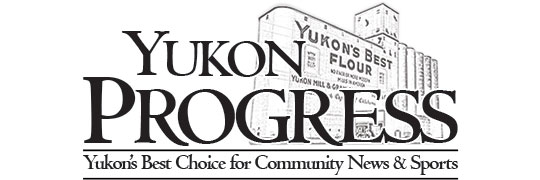

By Conrad Dudderar
Staff Writer
Signalization of the Holly Avenue/N.W. 10th intersection would provide a great safety improvement – but carries a multi-million-dollar price tag.
Making it a right-in/right-out intersection or installing turn lanes and signage would cost considerably less.
These are among findings in a traffic analysis of the Holly and N.W. 10th intersection just north of Interstate 40.
The City of Yukon contracted Traffic Engineering Consultants (TEC) to conduct the study, presented March 2 to the Yukon City Council.
Yukon has seen an elevated number of crashes at this intersection and asked TEC to help determine what – if any – measures could improve safety and operations.
“Based on the results of the analysis, there are several potential safety measures that could be pursued,” TEC engineer Michael Hofener advised city officials. “We developed several options for the intersection.”
The Holly Avenue/N.W. 10th intersection is an unsignalized, three-legged intersection with stop control on the southbound approach. The intersection lacks dedicated turn lanes.
N.W. 10th is an undivided arterial with a posted 40 mph speed limit and Holly Avenue is a two-lane collector with a posted 25 mph speed limit. The intersection provides access to several residential developments, the Yukon Community Center, Yukon City Park, and Shedeck Elementary School.
The traffic study shows there were five traffic collisions in 2017, nine in 2018, eight in 2019, and two through November 2020 at the intersection. Speeding was a factor in a fatal crash last year.
“Typically, five collisions at an intersection within a 12-month period would be an indicator to us that some improvements may be necessary from a mitigation standpoint,” Hofener told council members.
Some 45% of crashes from 2017-19 involved southbound-to-eastbound vehicles colliding with westbound vehicles.
The Holly Avenue/N.W. 10th intersection serves as primary access to Yukon’s “Christmas In the Park” holiday lights tour in November and December.
This results in a significant increase in traffic in the area. In fact, 55% of all crashes at the intersection during 2017-19 occurred in November and December.
Holly Avenue serves as a gateway to the park, particularly for traffic from Interstate 40. Temporary traffic controls are made at intersections around the park venue during the holidays when traffic is heavier.

WHAT ARE THE OPTIONS?
Yukon city engineer Robbie Williams shared three possible options to improve safety at the Holly Avenue/N.W. 10th intersection “from least expensive to very expensive”:
- Create a right-in/right-out intersection and eliminate left turns: This would require placing a “channeling island” with appropriate signage on Holly and solid striping in the middle of N.W. 10th. Estimated cost: $10,000-$20,000.
- Installing a right-turn lane on Holly at N.W. 10th. This would move westbound right-turning vehicles out of the through-traffic stream while increasing visibility for left-turning vehicles. Estimated cost: $300,000.
- Installing a new traffic signal. This would require reconstructing the 10th Street bridge to include a dedicated left-turn lane for traffic turning onto Holly. Estimated cost: $3.5-$4 million.
Estimated costs cover construction and engineering design. No right-of-way acquisition or utility relocation costs would be required with any of the three options.
Mayor Shelli Selby suggested installing “Dangerous Intersection” signs to reduce speeds of motorists traveling along N.W. 10th near Holly.
Hofener said this would be inexpensive and “worthwhile to try.”
In its traffic study of the Holly/10th Street intersection, TEC collected traffic data and crash data, and conducted a traffic signal warrant analysis and capacity analysis.
Weekday and Saturday traffic counts, taken in November 2020, were adjusted by 10% to account for reduced traffic volumes due to the COVID-19 pandemic.





